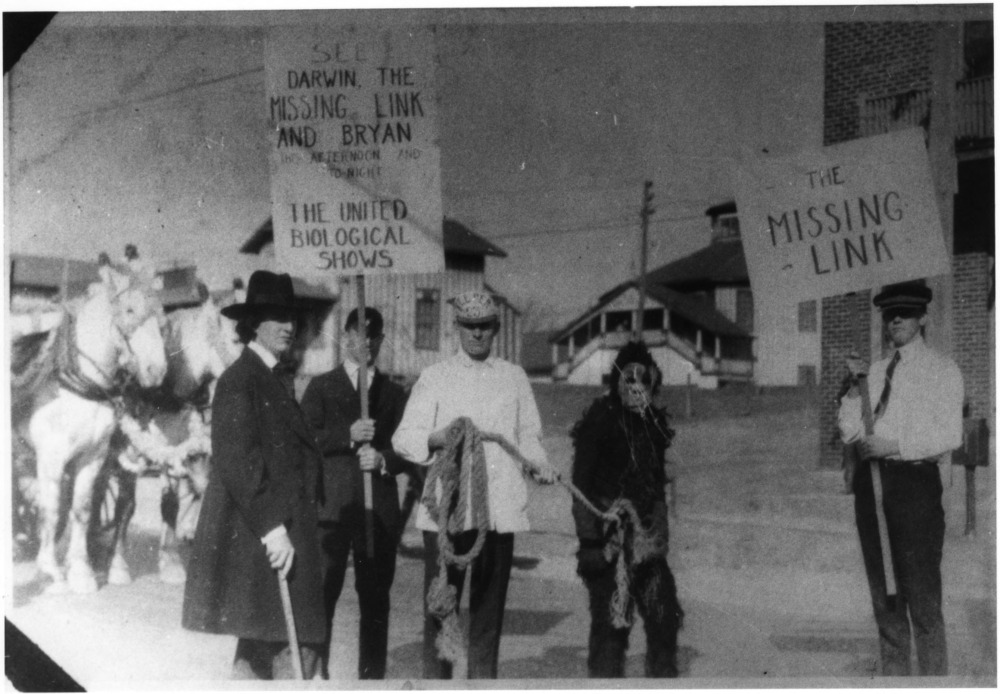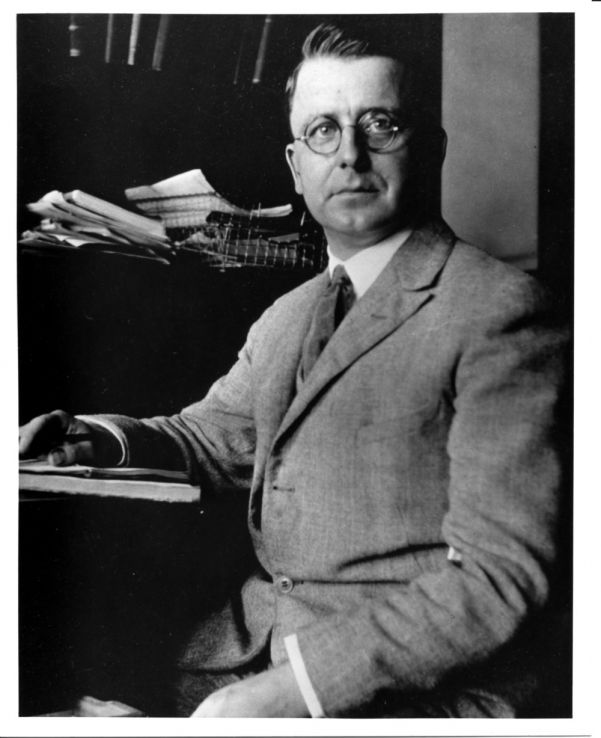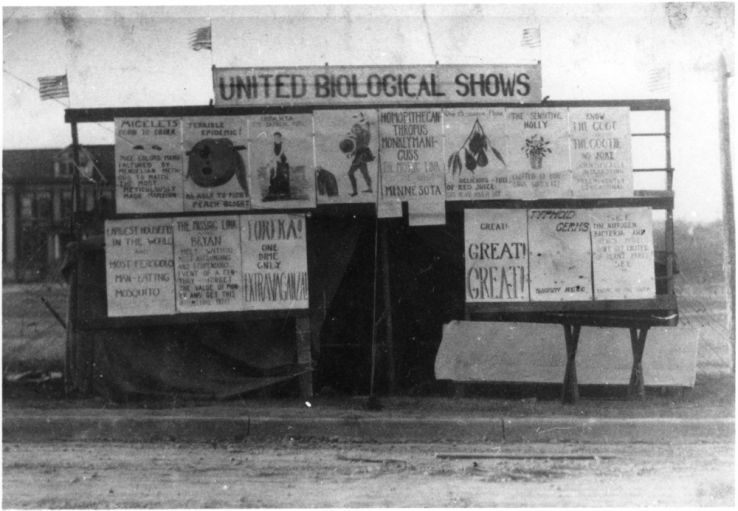
A student show featuring the "missing link" at the NC State College agricultural fair, Nov. 1922. Photo attributed to L. A. Whitford.

A student show featuring the "missing link" at the NC State College agricultural fair, Nov. 1922. Photo attributed to L. A. Whitford.
During the 1920s, Charles Darwin's theory of evolution was a controversial and contested topic in the United States and North Carolina, as described in an online resource from the UNC-Chapel Hill library and a North Carolina History Project encyclopedia entry. In 1922, it featured prominently at NC State College (as the university was then known). For the first time a single class on the subject was offered to students, possibly in the spring of that year. The course was taught by Professor Zeno P. Metcalf and/or Instructor Clifford O. Eddy, both from the Dept. of Zoology and Entomology, and under their tutelage students learned about the evolution of animals and humans. Aspects of the topic had been introduced in earlier years, and the 1901-1902 college catalog shows that the instruction of breeding covered "the principles and phenomena of evolution as applicable to the improvement of animals and plants." It doesn't appear to have stirred controversy at that time.

In May 1922, preachers at a Raleigh bible conference refuted the theory of evolution, and in the local newspapers NC State College's scientific community defended it. A debate was proposed for May 17, held in the only auditorium on campus (the original Pullen Hall, a building no longer existing but located between Primrose and Peele Halls). Metcalf was chosen to defend the theory; Minnesota-based minister William B. Riley represented the opposing side. In preparing for the debate, the zoology and entomology professor received considerable help from botany Professor B. W. Wells.
Several North Carolina newspapers covered the debate, and they were fairly equivocal as to the winner. To give just a few examples, the Statesville Record and Landmark (18 May 1922) stated that "neither speaker had quite got the range of the other, nor had they come to close grips, but to the supporters of each there was eminent satisfaction with the outcome of it," and the Greensboro Daily News (18 May 1922) concluded "it was universally admitted that no real harm was done." Even the New York Times (18 May 1922) picked up the story, giving a slight edge to the Metcalf side: "supporters of the scientist and of the theologian were about equally divided in strength, but in the opinion of some observers the scientific group was a little more powerful with lungs and muscle."
Oddly, the Technician student newspaper didn't report on the debate, but it did publish a humorous poem on the evolution controversy. One student who did attend (L. A. Whitford, later a faculty member) recalled in 1970 "I heard the debate from the south balcony and thought science won, of course."

Since Darwin's writings in the nineteenth century, there has been a popular misconception about a "missing link" between apes and humans. In Nov. 1922, some NC State students spoofed that idea at their Agricultural Fair with a presentation called "Darwin, the Theory of Evolution, Bryan, and the Missing Link" (the Technician mentioned it also). The gist of their humor isn't clear, but the photo at the top of this posting shows one student in a gorilla costume. "Bryan" was a reference to the politician William Jennings Bryan, who famously opposed the theory of evolution and featured famously in the Scopes trial a few years later. The same fair also included a presentation of "Homopithecanthropus Monkeymanicuss, The Missing Link" and a connection to Minnesota. Was that a reference to William B. Riley and the debate of the previous May? ("Homopithecanthropus" was an actual scientific term during that time period for fossils now classified as "Homo erectus"; "monkeymanicuss" was obviously made up!)
Sometimes the term "missing link" was used as a joking slur about someone's intelligence or behavior. That might have been the case when the 1925 Agromeck yearbook described student James Robert Browne as the "missing link" and the 1923 Agromeck predicted that G. H. Becton would be the "discoverer of the missing link between man and monkey." Or could these be veiled references to these students' involvement in the 1922 Agricultural Fair? We may never know, but it is interesting to speculate.